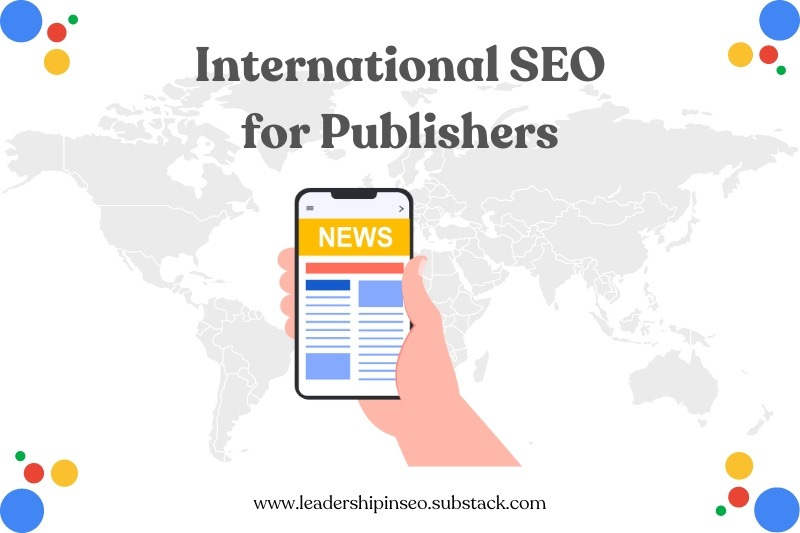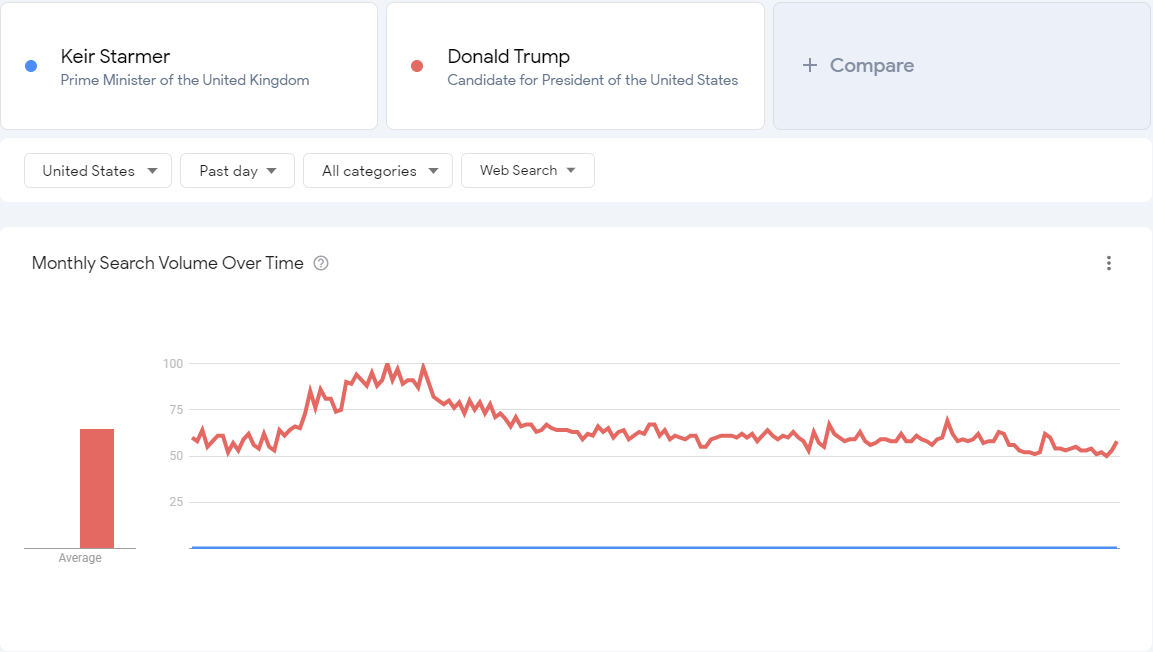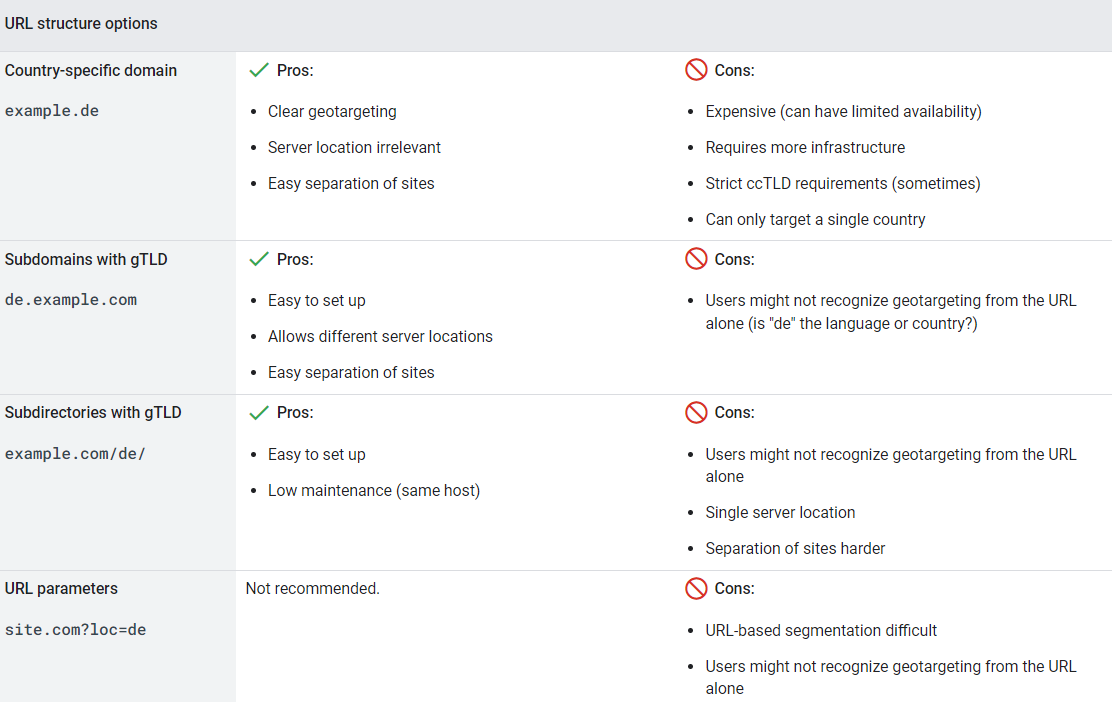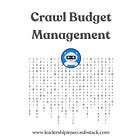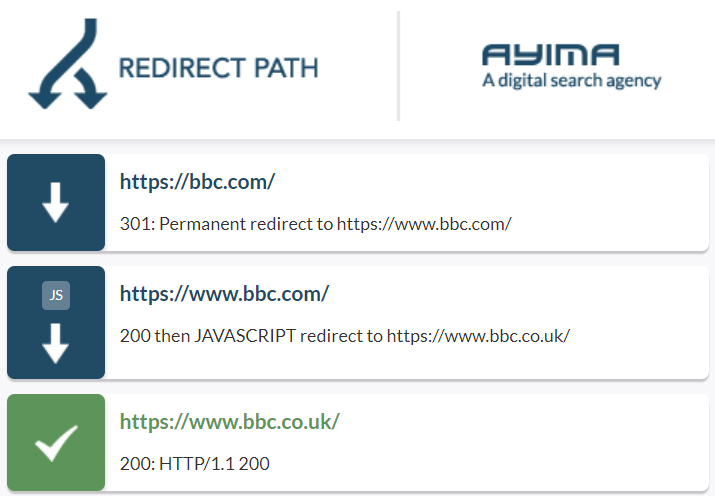International SEO for publishers
Learn how to increase traffic, conversions, and user engagement by tailoring your site for different languages and regions
I’m not normally a fan of big, seductive statements, but international SEO might be the most profitable thing you ever do…
Yes, it’s hard, even for big publishers. Your role as an SEO is to steer the business towards a sensible outcome that aligns with business goals. You’re competing with huge brands with well-established profiles in their market. And you’ve got to build. So it’s a shift from the norm, particularly for big publishers.
You need a plan. A bloody good one.
TL;DR
International SEO creates a personalised experience for users, enhancing site performance in each target market
This includes the localisation of content, configuration of site infrastructure, and building a brand to enhance visibility in these markets
Creating region-specific sites is the best way to target users and regions with localised content. But it’s also the most expensive and challenging
Instead of automatically redirecting users based on their IP address or location, prompt them to the right version of the site
First off, the basics…
What is international SEO and why does it matter?
International SEO is a variety of on-page, technical and off-page SEO strategies designed to rank your website in different languages and locations. In a perfect world, each market and language combination you enter creates an entirely separate entity. One that targets a certain type of user.
From an on-page standpoint, everything relies on the localisation of content. The language you use, currency, external and internal links and the keywords you target all affect the page's quality.
Technically, international SEO involves configuring your site’s infrastructure (URL structure, CDN, country and language targeting tags) to help search engines discover your relevant, localised content.
If we’re talking off-page (yes, in 2024 backlinks are still bloody useful), you need to build quality local links. If you’re launching in the USA, but your link profile is almost entirely UK-based, your content will have a glass ceiling. One that can only be raised with high-quality, local trust signals.
Why is it important for publishers?
If you don’t create content tailored to an audience they’ll be better served going elsewhere. Publishers need to craft a content strategy that adds value to specific audiences. One that targets topics and keywords relevant to each market.
Whether you’re a publisher, e-commerce site or SAAS service, I can guarantee you people aren’t going to pay for a sub-par product. Imagine trying to sell a product in a market with the wrong currency, or continuing to link to content only useful for a specific audience.

Think of it as website personalisation for the masses.
Dealing with news content in multiple markets
Arguably, this is the most complex facet of international SEO for publishers. Particularly high volume publishers. It’s a significant amount of extra work and not every article has value in each market.
If you’re trying to create separate versions of each site, you can create separate news articles for each location. Each article can then be localised with location-specific headlines designed to maximise traffic and keep users on the relevant version of your site.
US users search differently to UK users and the difference in each market can be substantial. Imagine a scenario where the same article can be tailored with separate headlines and headings designed to target different audiences. The traffic uplift can be extraordinary. That’s the real benefit.
How do I create an international content strategy?
There’s a simple approach you should follow;
Identifying the target market: Combine conversion rate, traffic, ranking and brand strength metrics from multiple locations and try to make a data-driven decision on the best opportunity for your brand.
Run some competitor and market analysis: How do your competitors fare? Can you learn from their mistakes?
Establish the countries, regions and languages you want to target: Where is your biggest opportunity? Review your analytics account and third-party data from tools like SEMRush and Google Trends to review branded and topical traffic demand.
Develop a localised content strategy: How will you localise your content effectively? Language, currency, external and internal links et al.
Identify priority pages and themes: For publishers, you will have specific topics you’re more authoritative on than others. In Search Console, look for themes that generate more traffic than others in a particular market. Start there.
Create a technical rollout strategy: What TLD will you use? How will you serve the correct content to your audience? How will your structured data change?
Execute
Measure: Set KPIs around traffic (branded and un-branded), conversions and engagement data based on business demand.
International SEO best practices
There are eight fundamental considerations when it comes to international SEO.
Domain structure
You have three clear options when it comes to the structure of your site;
ccTLD (country code top-level domains)
Subdomains under a gTLD (generic top level domains)
Subdirectories under a gTLD
You could also use URL parameters, but unless you’re desperate I would try and avoid this at all costs. Google also recommends you don’t use them. Whilst I’m not an advocate for following Google’s advice to a T, this is good stuff.
ccTLDs are undoubtedly the best option. They provide the clearest signal to search engines (and users) as to which country and language you’re targeting. And from personal experience, it’s significantly easier to manage multiple, separate entities under a single domain.
They’re almost certainly more expensive and more complex to set up. But if you can afford to, then follow this.
Subdomains and subdirectories have their uses. They’re easier and cheaper to set up and require less configuration. But with subdirectories, it’s much, much harder to create entirely separate entities and it’s easy for users to slide into a section of your site not designed for them.
Subdomains create a distinct entity and allow for a different server/hosting location. However, the path of the URL is much less distinctive and your site’s local relevance is less obvious.
Hreflang tags
Hreflang tags are placed in the head, HTTP header or sitemap of your site that help search engines identify the page to show in each market. They are arguably the most important international signal when it comes to technical SEO.
In a scenario where you have multiple English language variations of a website (the UK, USA, Australia etc), it can be tricky to know which page should rank where. And for whom? These are known as ‘alternate’ variations of each page. Almost exactly the same page, just localised for different regions and languages.
Hreflang tags take the guesswork out of the situation. They explicitly tell search engines which page you want to rank in each market, like so;

Imagine leaving a search engine to figure the above out… It’d be carnage. Once you’ve invested so much in localising content and creating separate entities, be explicit with crawlers. Don’t leave it up to chance.
When implementing hreflang tags there are a couple of key considerations;
Make sure you use the correct language and country code
Each variation should link to their country and language counterpart
Make sure the hreflang tags link to the canonicalised version of each page
X-default hreflang tag
Most hreflang tags are specific to a language, region or both. This allows crawlers to serve specific language and region variations correctly. But there’s also an x-default option available. It’s designed to be your fallback option for anyone who sits outside of the language and country options you have created.
For example. If you have a .com ccTLD and have created an English language version for both the UK and USA, the example.com/uk and example.com/us would be set up with en-gb and en-us hreflang tags respectively.
But what happens to English speakers outside of the UK and the USA? What version of the site do they get shown?
That’s where the x-default tag comes in. This tag says ‘serve me as the fallback option to anyone who sits outside of my language and country variations.’ In this example, the example.com root could be the x-default option. Or you could choose the example.com/uk or /us as the x-default option.
English speakers from the ROW would then be served this version of the site.
Hreflang tags vs 302 redirects
Hreflang tags let you create a separate website version for each audience. That’s the true best experience. It’s also the most complex, time-consuming and expensive approach to set up and maintain—quelle surprise.
However, Top Stories just doesn’t seem to work in that manner. My theory is that Google isn’t able to process information fast enough to determine the correct language and country. It’s why we end up with so many international results in the news box. It’s why brands use geo-based 302 redirects for news content. If a story on the UK website ends up in US Top Stories, brands send the user to the ‘relevant’ version of the page if both exist.
Let’s take The Guardian as an example. With multiple ‘editions’ of the website and a significant presence in multiple markets, you’d think The Guardian has a sophisticated international SEO set-up…

All The Guardian has is a standalone homepage for each entity (US, UK, Australia, Europe and International). URLs are still housed under the .com version of the website under World News or US News.
Is it perfect? No. Far from it. But it seems to be working. And creating a separate version of each article for such a huge site is no small task. Sometimes it’s better not to touch things and just continue to build a stronger brand.
Like almost any SEO initiative there’s more than one way to swing a SERP. Whilst it could be improved, you have to ask yourself whether it’s worth doing.
As long as it doesn’t appear to hold you back, you may be better spending your time elsewhere.
How do I set hreflang tags up?
There’s a pretty simple tooling suite you can use to create and set them up effectively;
Use hreflang.org’s verified list of country and language codes
Aleyda Solis’ hreflang tag builder to begin building the tags
The Sistrix version of this tool is also very good
Merkle’s hreflang tag testing tool for ensuring the implementation is correct
All are free and easy to use. If you use any paid version of Chat-GPT or Google Gemini, they should be able to handle this kind of task at scale too. Just make sure you check and test the outputs effectively.

Localised content
Localising content goes far beyond just translating the language. In an AI-driven age, serving machine-translated content is a start, but will guarantee a fairly average experience for international users if that’s all you do.
Localising content requires local expertise and understanding. A level of detail a machine cannot deliver. In my opinion, you get one shot to do this well as a publisher. You need to give people something they’re willing to pay for. And machine-translated content isn’t it.
To localise effectively, you need to show you understand the local audience. That means;
Link to useful resources for the target market (an external link should be an extension of your page)
Use unique, localised imagery
Work with local experts, either as the author or an expert contributor
Serve content with a region-specific timestamp
Use the correct currency format
Show you understand regional differences. Languages like Spanish or English have multiple lexical and pronunciation differences you need to be aware of.
Provide greater context where appropriate
What provides more context to an international audience?

Whilst Trump is globally recognised… Politician? Celebrity? Whatever he is, he’s recognised. Keir Starmer is a) new to the position and b) far less well-known. So context is important. CTR and engagement metrics are a key part of Google’s ranking system NavBoost. So show you understand the local audience.
Backlinks
Still the holy grail of SEO in a post E-E-A-T world. Nothing is more trustworthy than quality links, particularly when launching in new markets.
Think of it this way. With everything you now know about how the algorithm works - particularly how driven it is by user satisfaction - is it likely you can break into a new SERP without that market accepting you?
Now, the art of backlink acquisition is improved when you have effectively localised content. But it’s still driven by adding real value. Something others just aren’t doing. Or at least doing as well.
Investing in content marketing and digital PR is a surefire way to raise the ceiling of you content. Brand building initiatives are key. You need users to see your brand at the right time and place. You need them to search for you and trust you. All of that leads to long-term search improvements.
Users trust brands. So does Google.
Internal links
Once you have created a separate entity (preferably on a ccTLD, but whatever floats your boat and budget), your goal is to make sure users never stray from their preferred version. Keep US users on the US version of your site, UK users on the UK etc. Once they’re there keep them there.
That’s where your internal linking becomes so important. Your navigational links should only link to content on the US site. Once you start linking between websites you create a sub-optimal user experience. One where they may not even be able to convert.
It creates friction. And first impressions matter. So make sure that when you’re reviewing in-article links, links in the right-hand rail, menus, recommended articles et al, you avoid cross-linking between sites.
IP-based redirects vs prompting users
Many publishers forgo sending a prompt to users based on your location or IP address and utilise temporary Javascript redirects to automatically send users to the ‘local’ version of the page.
I’ve never liked this approach. Instead of providing the best user experience, brands tell users what they think they should be reading. It breaks the fundamental principle of putting the user first.
I prefer websites that send a prompt based on my location rather than automatically redirecting me to the page the brand wants. This is particularly clumsy for users on holiday or ex-pats who want to see the UK version of the website.
For a UK user, bbc.com is inaccessible unless you toggle Javascript off, as a temporary 302 redirect sends you to the appropriate version of the BBC based on your location/IP address.
Toggle Javascript is one of my favourite Chrome extensions. Highly recommended for testing how websites work without Javascript and for accessing websites that use JS redirects.
Server location
This is a minute factor in international SEO and not one you should concern yourself with. I think this is likely more of a legacy concern when we weren’t able to specify which language and/or country the page is targeting.
If you weren’t using a CDN your server location would impact page speed. The further the user is from the server’s location, the slower the page speed.
Using a CDN (Content Delivery Network)
But if you are using a CDN (and you should be), then there are no concerns with server location and page performance. At least not due to the distance the responses have to travel.
CDNs work by distributing copies of your website's static content (like images, CSS files, and scripts) across a network of servers strategically located around the world. When a user from a specific region sends a request to your website, the CDN serves content from the closest server. This reduces the distance between the user and the server.
They also work well if you run a website that has significant seasonal or event-based spikes in traffic by distributing traffic between their networks of servers.
If you’re someone using a small site, Cloudflare has a free CDN option that will more than do the job for most websites.
Other great resources
ahrefs blog on international SEO has a checklist you can use
Backlinko’s guide to international SEO is very comprehensive
Contentful’s guide to multilingual SEO has a very clear example of how to approach things





